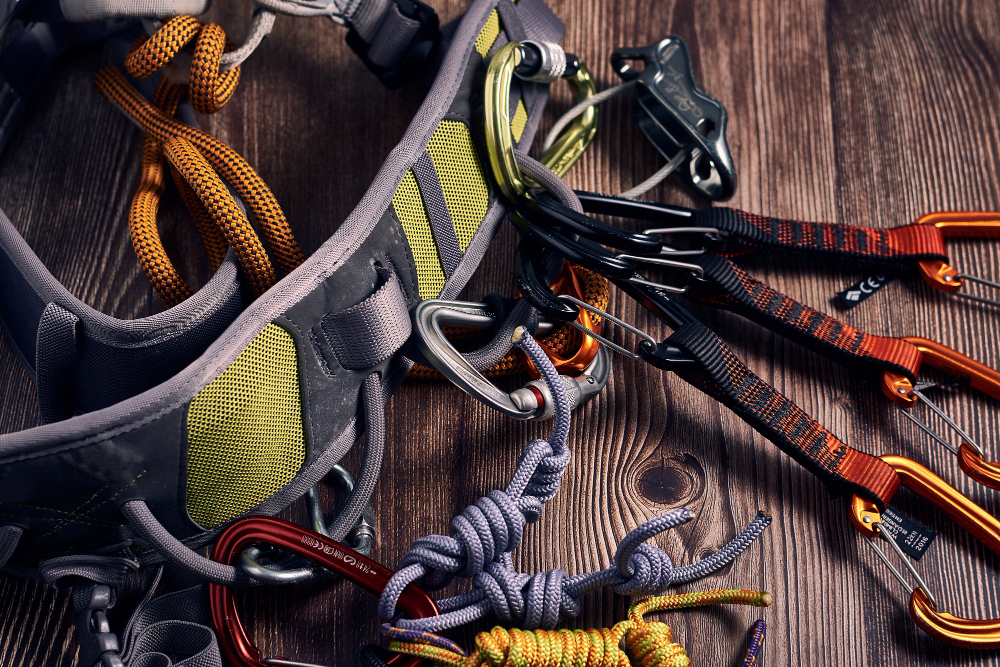Rigging Equipment Key Tools for Every Lifting Task
Rigging is an integral part of various industries, particularly construction, shipping, manufacturing, and entertainment. It involves the use of specialized equipment to lift, move, and position heavy loads safely and efficiently. Whether you’re working on a construction site, a theater production, or a marine vessel, understanding the different types of rigging equipment and how they work is crucial for ensuring safety and precision.
In this blog, we’ll explore the essential rigging equipment, its types, and how to choose the right gear for your job.
What is Rigging?
Rigging refers to the use of equipment and tools to lift, move, and support heavy loads. The primary goal is to secure the load and ensure it can be safely transported or lifted without risk to people or property. Rigging is used in various industries, including construction, shipping, aerospace, and entertainment. It is essential for tasks such as hoisting, positioning, and securing loads, ensuring that heavy items like machinery, steel beams, or cargo containers can be moved safely.
Types of Rigging Equipment
Rigging equipment can be divided into several categories, each designed for specific tasks and loads. Let’s take a closer look at the most commonly used rigging tools and equipment.
1. Rigging Slings
- Purpose: Slings are used to attach the load to the lifting equipment (like cranes or hoists). They come in various materials, lengths, and designs to handle different types of loads.
- Types:
- Wire Rope Slings: These slings are made from steel wires and are known for their strength and durability. They are ideal for lifting heavy and abrasive materials and can withstand harsh environments.
- Chain Slings: Chain slings are another strong and durable option, often used for heavy-duty lifting in tough environments. They are resistant to heat, making them ideal for high-temperature applications.
- Synthetic Slings: These are made from materials like nylon or polyester, offering flexibility and ease of handling. Synthetic slings are lighter and less likely to damage delicate materials compared to wire or chain slings.
2. Hooks
- Purpose: Hooks are used to attach the load to the rigging system. They are typically attached to a hoist or crane and are designed to securely hold the load while lifting.
- Types:
- Standard Lifting Hooks: These are used for general lifting applications and come in various sizes and designs. They typically have a latch or safety mechanism to prevent the load from slipping.
- Clevis Hooks: Clevis hooks are designed to be attached to a clevis (a U-shaped fastening). They are used for lifting and securing loads in more rigid setups.
- Swivel Hooks: These hooks are equipped with a swivel mechanism that allows the hook to rotate freely. This helps reduce strain on the lifting gear when handling loads from different angles.
3. Cranes and Hoists
- Purpose: Cranes and hoists are mechanical devices used for lifting and lowering heavy loads. These tools are essential for large-scale operations, such as construction or heavy lifting in manufacturing plants.
- Types:
- Overhead Cranes (Bridge Cranes): These cranes are mounted on a horizontal beam or bridge, allowing the lifting mechanism to move along the beam. They are commonly used in factories, warehouses, and construction sites to lift heavy materials.
- Tower Cranes: Tower cranes are commonly used in construction, particularly for high-rise buildings. They have a vertical mast and are able to lift extremely heavy loads to great heights.
- Chain Hoists: Chain hoists use a chain to lift loads and are typically used for medium-duty applications. They can be manually or electrically operated and are ideal for smaller construction or maintenance tasks.
- Electric Hoists: These hoists are powered by electricity and are used for lifting heavier loads efficiently. Electric hoists are often integrated into crane systems for enhanced performance.
4. Rigging Shackles
- Purpose: Shackles are used to connect rigging components and secure loads to the lifting device. They are typically made from steel or other heavy-duty materials and are essential for ensuring the load is securely fastened.
- Types:
- D-Shackles: These shackles have a “D” shape and are commonly used for lifting and securing loads. They are ideal for use in fixed, straight-line applications.
- Bow Shackles: Bow shackles have a more rounded shape and are capable of handling multiple loads or rigging points. They are typically used in more dynamic lifting situations.
- Pin Shackles: These shackles have a pin that secures the connection. The pin is often threaded to prevent accidental release, ensuring a tight connection during lifting operations.
5. Rigging Plates and Spreaders
- Purpose: Rigging plates and spreaders help distribute the load evenly when lifting, ensuring that the load remains stable and balanced.
- Types:
- Rigging Plates: These are flat plates used to distribute the load evenly across the rigging system. They help ensure that the load is lifted in a balanced manner to prevent tipping or swaying.
- Spreader Bars: Spreader bars are used to prevent a sling from bunching and ensure that the load is evenly supported across multiple lifting points. They are often used when lifting large, wide objects.
6. Lifting Beams
- Purpose: Lifting beams are used to lift and distribute the weight of a load across multiple points. They are often used in conjunction with cranes and hoists to safely lift large loads.
- Types:
- Fixed Lifting Beams: These beams have a fixed length and are used to lift loads at a single height. They are ideal for lifting large, bulky items.
- Adjustable Lifting Beams: These beams can be adjusted to different lengths, allowing for more flexibility when lifting various types of loads.
7. Rigging Accessories
- Purpose: Rigging accessories are the additional tools needed to complete a rigging system. These include items like turnbuckles, load binders, and slings that help secure and stabilize the load.
- Types:
- Turnbuckles: Used to adjust the tension of a sling or wire rope, turnbuckles are essential for achieving the correct load positioning.
- Load Binders: These are used to secure the load during transport, ensuring that it remains stable and does not shift.
Choosing the Right Rigging Equipment
Selecting the right rigging equipment depends on several factors:
- Weight of the Load: Always ensure that the rigging equipment you choose can safely handle the weight of the load. Check the load capacity of slings, hooks, and cranes before use.
- Type of Load: Different materials require different rigging methods. For example, fragile loads may require synthetic slings, while heavy, durable loads may be better suited for chain slings or wire ropes.
- Environment: Consider the environment where you’ll be rigging. For outdoor or harsh conditions, rust-resistant materials like galvanized steel may be required. For high-temperature areas, heat-resistant slings and hooks are necessary.
- Safety: Rigging safety is paramount. Ensure that the rigging gear is regularly inspected, maintained, and tested for compliance with safety standards. Always use proper lifting techniques and follow guidelines to prevent accidents.
Maintenance of Rigging Equipment
Rigging equipment requires regular maintenance to ensure optimal performance and safety:
- Inspect Regularly: Check slings, shackles, and other rigging tools for signs of wear and tear. Damaged equipment should be replaced immediately.
- Lubricate Moving Parts: Keep the moving parts of cranes, hoists, and shackles well-lubricated to reduce friction and wear.
- Clean Equipment: Regularly clean your rigging equipment to remove dirt, debris, and corrosive materials that could affect its integrity.
Conclusion
Rigging equipment is essential for safely lifting and moving heavy loads, and the right tools are critical for ensuring efficiency and safety on the job. From slings and hooks to cranes and shackles, each component plays a vital role in creating a secure and stable lifting system. By understanding the different types of rigging equipment and how to choose and maintain them, you can carry out your lifting operations with confidence and peace of mind.














1 comment